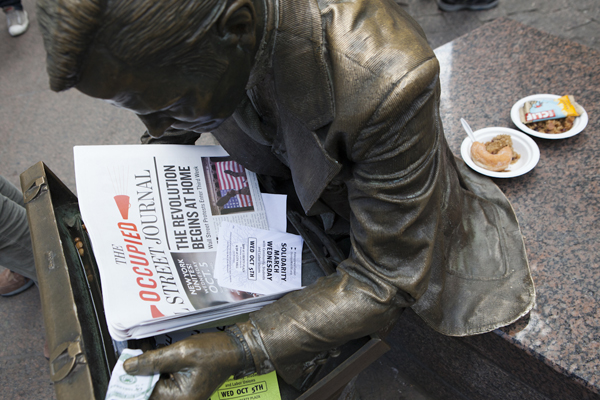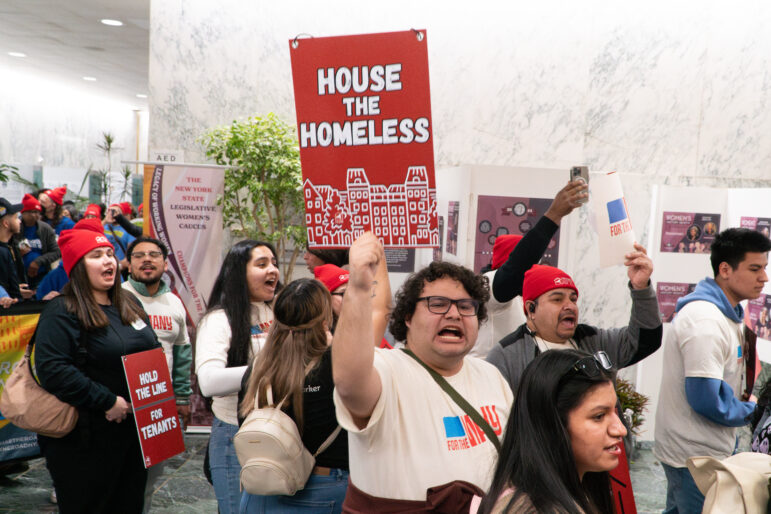
Photo by: Marc Fader
Some critics have faulted OSW for a diffuse message. But a few in the crowd are resistant to the little centralization that does exist there.
While the Occupy Wall Street movement began as a protest against economic inequality and an example of how to do things differently, in the eyes of some, it is beginning to resemble the current U.S. governmental system a little too closely.
Pittsburgh native Briar Somerville, 19, a linguistics and anthropology student at NYU, is an anarchist. She is frustrated by the NYC General Assembly, the de-facto decision making group of Occupy Wall Street. While the General Assembly describes itself as an openly organized group of participants, Somerville says that, in practice, protesters must align themselves with a group in order to be heard.
“So individuals can’t speak up?” she asks. “It keeps coming back to this bureaucracy that we’re trying to get away from.”
The General Assembly website gives supporters the opportunity to donate funds and Somerville has an issue with the way money is distributed.








